Home
Welcome to the Structural & Electronic Surface Dynamics Group!
We are an experimental research group investigating the electronic and atomic structure of solids and heterostructures in out-of-equilibrium conditions. We develop and use ultrafast techniques providing movies of the electronic and atomic structure in solids and nanostructures. From these time-resolved measurements, we infer information on coupling and correlation effects of electrons and atomic motion. Our techniques include time- and angle-resolved photoelectron spectroscopy (trARPES), femtosecond electron diffraction and microscopy, and time-resolved optical spectroscopy.
News
Time-resolved core-level spectroscopy reveals exciton dynamics.
Aug 2020
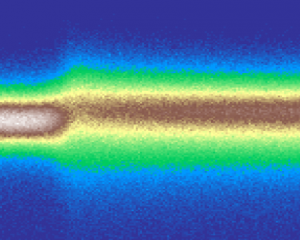
Optoelectronic applications root in excited electronic states. In semiconductors, there are two types of excited states: many-body states like bound electron-hole states, so-called excitons, and simpler quasi-particle states, typically referred to as quasi-free carriers (QFCs). In general, both types coexist in a dynamic interplay of exciton and QFC populations.
We present a novel, at first glance counter-intuitive approach for accessing exciton and QFC dynamics on ultrafast time scales: the photoemission lineshapes of core levels, i.e. states deep below the frontier orbitals, turn out to be sensitive probes of the electron dynamics occurring in the valence and conduction band. By combining time-resolved photoemission spectroscopy simultaneously probing excited states and core levels with a novel lineshape model, we retrieved how the character of excited states changes from excitonic to QFC-like. Our core finding is that the [more...]
We present a novel, at first glance counter-intuitive approach for accessing exciton and QFC dynamics on ultrafast time scales: the photoemission lineshapes of core levels, i.e. states deep below the frontier orbitals, turn out to be sensitive probes of the electron dynamics occurring in the valence and conduction band. By combining time-resolved photoemission spectroscopy simultaneously probing excited states and core levels with a novel lineshape model, we retrieved how the character of excited states changes from excitonic to QFC-like. Our core finding is that the [more...]
Time-Reversal Dichroism in ARPES
Jun 2020
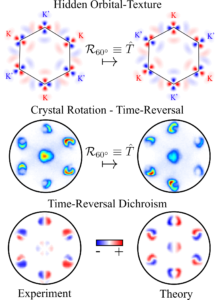
Angle-resolved photoemission spectroscopy (ARPES) is the most direct technique to probe the electronic structure of crystalline solids. While ARPES is typically used to map the bands’ dispersion, increasing the dimensionality of the measurements, and thus of the observables, have been shown to provide more subtle information about the electronic wavefunction of solids. In this joint experimental and theoretical work (in collaboration with J. Braun, H. Ebert, K. Hricovini, J. Minar and M. Schüler), we introduce a new observable in ARPES, Time-Reversal Dichroism in Photoelectron Angular Distributions (TRDAD). This novel observable quantifies the modulation of the photoemission intensity upon azimuthal crystal rotation which mimics a time-reversal operation. We demonstrate that this observable allows accessing the hidden orbital pseudospin texture in bulk 2H-WSe2.
[more...]
[more...]
Workshop on data aspects in ARPES
May 2020
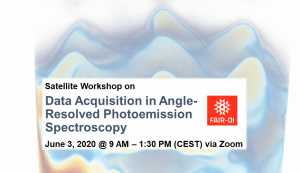
On Wednesday, June-3, a virtual Workshop on Data Acquisition in Angle-Resolved Photoemission Spectroscopy will be organized. Registration is free of charge at the FAIR-DI Conference on a FAIR Data Infrastructure for Materials Genomics.
Scope of the workshop: Due to the advancement of both electron detectors and light sources, ARPES data is increasing in volume and complexity. This applies to ARPES performed at 3rd and 4th generation light sources as well as lab-based sources. We have reached a point where data handling, workflow management, visualization and analysis are a severe challenge and potentially become the bottleneck [more...]
Scope of the workshop: Due to the advancement of both electron detectors and light sources, ARPES data is increasing in volume and complexity. This applies to ARPES performed at 3rd and 4th generation light sources as well as lab-based sources. We have reached a point where data handling, workflow management, visualization and analysis are a severe challenge and potentially become the bottleneck [more...]
new preprint: A machine learning route between band mapping and band structure.
May 2020
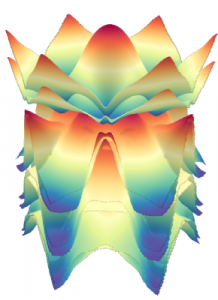
Angle-resolved photoemission spectroscopy (ARPES) provides the most direct access to the electronic structure of solids. In collaboration with researchers in the fields of machine learning and electronic structure theory, we developed a computational method for reconstructing the band structure of the semiconductor tungsten diselenide from three-dimensional ARPES data.
preprint: Xian et al., arXiv:2005.10210
preprint: Xian et al., arXiv:2005.10210
Observation of large polarons in the perovskite semiconductor CsPbBr3
May 2020
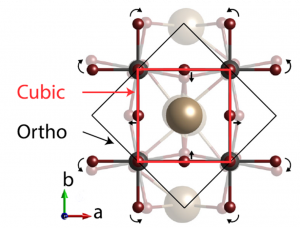
Puppin et al., Phys. Rev. Lett. 124, 206402 (2020).
Ultrafast Light-Induced Lifshitz Transition
Mar 2020
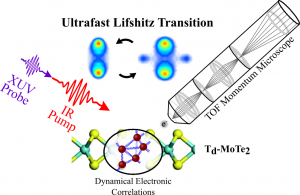
In crystalline solids, electrons fill quantum-mechanically allowed states from the lowest possible energy upwards, a consequence of the Pauli exclusion principle. The energy of the highest occupied state is known as the Fermi energy. Because electrons within solids have well-defined three-dimensional momenta, one can plot components of these momenta against each other, for electron lying at the Fermi energy, leading to characteristic and often beautiful shape, bounded by a so-called Fermi surface.
The Fermi surface is “the stage where the drama of the life of the electron is played out,” wrote famous physicists Lifshitz and Kaganov, in 1980. Indeed, the shape of the Fermi surface governs most of the properties of metals and strongly correlated many-body systems. Equilibrium tuning of macroscopic parameters such as temperature, pressure, strain or doping has recently been established as robust tools to modify the Fermi [more...]
Anisotropic Nonequilibrium Lattice Dynamics of Black Phosphorus
Feb 2020
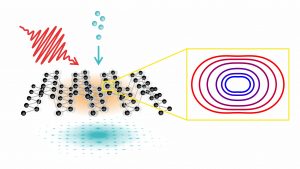
Black phosphorus is a layered semiconductor with an intriguing in-plane anisotropic structure. We studied its lattice response to photoexcitation using femtosecond electron diffraction and found that the anisotropic structure impacts the evolution of the atomic vibrations. After photoexcitation, the lattice remains in a nonthermal state up to about 60 picoseconds, which is characterized by less anisotropic atomic vibrations compared to equilibrium. Our results provide timescales for electron-phonon and phonon-phonon thermalization in black phosphorus and show that in the presence of an anisotropic crystal structure, nonthermal phonon populations can transiently change the anisotropy of the atomic vibrations. More information is available here and a video presentation is available here. [more...]
Tommaso Pincelli receives the Postdoctoral Humboldt Research Fellowship
Feb 2020
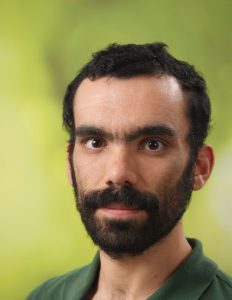
Tommaso Pincelli was awarded the Humboldt Fellowship for Postdoctoral Researchers from the Alexander von Humboldt Foundation. Tommaso will focus on understanding the effects of interfacing on the electronic structure of 2D materials, aiming at discovering across-interface transport mechanisms and conserved quantities such as spin and valley polarization.
First time- and momentum-resolved photoemission studies using time-of-flight momentum microscopy at a free-electron laser.
Jan 2020
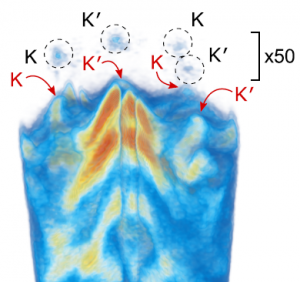
The free-electron laser FLASH at DESY in Hamburg delivers femtosecond soft-x-ray pulses which allow unique applications in the field of time-resolved photoelectron spectroscopy. We participated in a larger consortium establishing time-resolved momentum microscopy with such 4th generation photon sources.
D. Kutnyakhov et al., First time- and momentum-resolved photoemission studies using time-of-flight momentum microscopy at a free-electron laser.
Rev. Sci. Instrum. 91, 013109 (2020).
D. Kutnyakhov et al., First time- and momentum-resolved photoemission studies using time-of-flight momentum microscopy at a free-electron laser.
Rev. Sci. Instrum. 91, 013109 (2020).
Theory of exciton signatures in trARPES.
Nov 2019
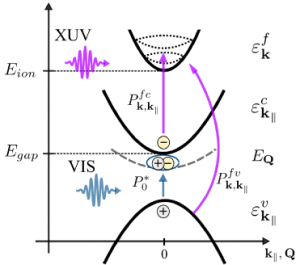
Collaborators from the group of Andreas Knorr at the TU Berlin developed a theoretical description of angle-resolved photoemission signals from transient excitonic states.
Christiansen et al., Phys. Rev. B 100, 205401 (2019).
Christiansen et al., Phys. Rev. B 100, 205401 (2019).
Ivana Lapsanska receives best poster price
Sep 2019
Attending the Workshop on Nano and Ultrafast Surface Science (NUSS) at the Institute for Advanced Study in Garching, Ivana returned with the prize for the best poster. Congratulations!
Thomas Vasileiadis graduates at FU Berlin
Jul 2019

Thomas received his PhD in physics for his investigations of ultrafast energy flow and structural dynamics in nanoscale heterostructures with femtosecond electron diffraction.
Algorithm for multidimensional contrast enhancement developed.
Jul 2019
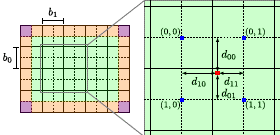
Contrast enhancement is an important preprocessing technique for improving the performance of downstream tasks in image processing and computer vision. Our multidimensional photoemission spectroscopy results in densely sampled data of higher than three dimensions. The initial understanding of these complex multidimensional datasets often requires human intervention through visual examination, which may be hampered by the varying levels of contrast permeating through the dimensions. In collaboration with collaborators from the MPI for Intelligent Systems, a multidimensional extension of contrast-limited adaptive histogram equalization (MCLAHE) has been developed.
The algorithm is publicly available, a preprint of its description is available here: [more...]
The algorithm is publicly available, a preprint of its description is available here: [more...]
An algorithm for symmetry-guided non-rigid registration
Jun 2019
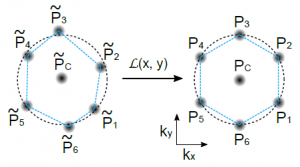
new paper: Xian et al., Ultramicroscopy 202, 133 (2019).
OA: arXiv 1901.00312
An image symmetrization algorithm for symmetry criteria-based correction of volumetric data is described. Its use for the distortion correction of volumetric photoemission data is demonstrated. The code is provided as open source software package for sharing and reuse.
OA: arXiv 1901.00312
An image symmetrization algorithm for symmetry criteria-based correction of volumetric data is described. Its use for the distortion correction of volumetric photoemission data is demonstrated. The code is provided as open source software package for sharing and reuse.
New DFG-funded project in Collaborative Reserach Center
May 2019
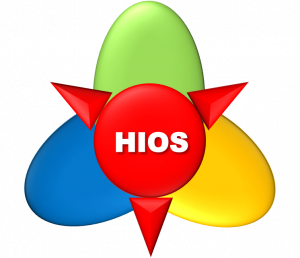
The CRC 951 – Hybrid Inorganic/Organic Systems for Opto-Electronics (HIOS) is a Berlin-based interdisciplinary collaborative research center. The DFG just approved a third 4-year funding period starting July-1 2019. We are new members of this collaborative research project and will investigate ultrafast [more...]
Femtosecond electron diffraction established as goniometer for ultrafast nanocrystal rotations
May 2019
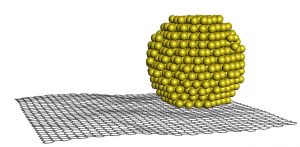
Structural stability of nanoscale building blocks is prone to ultrafast lattice motions that range from atomic vibrations, to translations and rotations of entire nanostructures. In this work, we establish femtosecond electron diffraction as goniometer of ultrafast nanocrystal rotations. To achieve our goal, we have combined size-selected synthesis of Au nanoclusters on graphene and femtosecond electron diffraction experiments with molecular dynamics and electron diffraction simulations. We have found that Au923 nanoclusters perform constrained rotational motions, termed librations, driven quasi-impulsively by graphene’s phonons in picosecond timescales. Our investigations aim for a more complete understanding of out-of-equilibrium conditions, heat- and mass-transport in nanoscale heterostructures. The article is now published in Nanoscale Horizons and it was the product of an international collaboration that involved, among others, [more...]
BiGmax project approved / postdoctoral research opportunity
Feb 2019
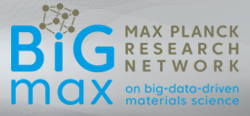
BiGmax is a Max Planck Research network on big-data-driven materials science. We collaborate with computer scientists from the MPI for Intelligent Systems to apply machine learning approaches to multidimensional photoemission data.
We are seeking a postdoctoral researcher for this interdisciplinary project merging condensed matter physics and computer science.
We are seeking a postdoctoral researcher for this interdisciplinary project merging condensed matter physics and computer science.
Description of our time- and angle-resolved photoemission spectroscopy setup published
Feb 2019
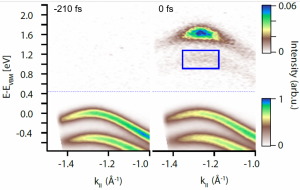
new paper: Puppin et al., Rev. Sci. Inst. 90, 023104 (2019).
open access: arXiv 1811.06939
TrARPES with a laser-based 500 kHz XUV beamline: we report the result of a long-term experimental development project. We developed a high-repetition rate extreme ultraviolet laser source (photon energy: 22 eV, pulse duration: 20 fs) which is used as probe pulses in trARPES experiments. This experimental setup allows multidimensional photoemission spectroscopy: the electronic structure of solids in an excited state can be observed in energy, both parallel momentum directions, and time.
THz compression of electron pulses to sub-30 fs pulse duration
Feb 2019
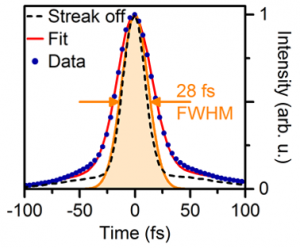
In collaboration with the group of Peter Baum, Univ. Konstanz, a short-pulse electron source providing few-electron bunches with a duration below 30 fs was developed.
Ehberger et al., Phys. Rev. Applied 11, 024034 (2019).
Ehberger et al., Phys. Rev. Applied 11, 024034 (2019).
Helene Seiler receives SNF Postdoctoral Research Grant
Jan 2019
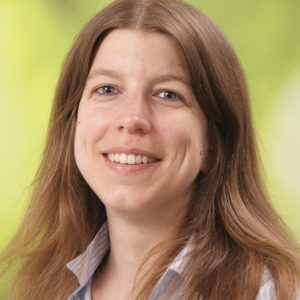
Helene Seiler was awarded a postdoc mobility grant by the Swiss National Science Foundation. Helene will study ultrafast structural dynamics in photovoltaic materials.
Beyond the molecular movie: dynamics of bands and bonds during a photo-induced phase transition
Nov 2018
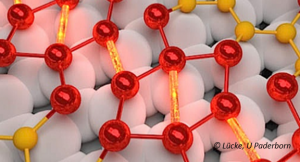
new paper: Nicholson et al., Science 362, 821 (2018)
open access: arXiv 1803.11022
Watching the motions of atoms in the course of a chemical reaction is generally thought of as the Holy Grail for understanding chemical transformations or phase transitions in solids. While recordings of such “molecular movies” have been achieved in recent years, the atomic motion does not reveal the whole story of why specific bonds break and others form. This is dictated by the arrangement of the electrons as the atoms move along gradients on an energy landscape defined by the electrons. It is therefore necessary to observe the dynamics of the electronic structure, which means to record an “electron movie”, to obtain a complete [more...]
open access: arXiv 1803.11022
Watching the motions of atoms in the course of a chemical reaction is generally thought of as the Holy Grail for understanding chemical transformations or phase transitions in solids. While recordings of such “molecular movies” have been achieved in recent years, the atomic motion does not reveal the whole story of why specific bonds break and others form. This is dictated by the arrangement of the electrons as the atoms move along gradients on an energy landscape defined by the electrons. It is therefore necessary to observe the dynamics of the electronic structure, which means to record an “electron movie”, to obtain a complete [more...]
Chris Nicholson receives the Carl-Ramsauer-Preis der Physikalischen Gesellschaft zu Berlin
Nov 2018
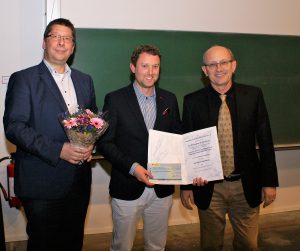
Chris Nicholson, former collaborator from the Dynamics of Correlated Materials Group, receives the Carl-Ramsauer-Preis for his PhD studies on ultrafast electron dynamics in low-dimensional systems. Congrats, Chris!
Hot-electron induced disordering of gold nanoclusters revealed
Jul 2018
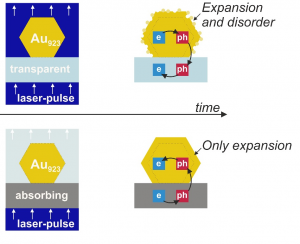
Vasileiadis et al., ACS Nano 12, 7710 (2018), [doi: 10.1021/acsnano.8b01423].
OA: arXiv:1803.00074
We investigated the flow of energy in laser-excited gold nanoclusters arranged on different thin film substrates with femtosecond electron diffraction. This experiment revealed an ultrafast disordering of the nanocluster’s surface atoms which only occurs in the presence of hot electrons with a temperature exceeding 3000 K. These findings result from a collaboration with the group of Richard Palmer, Swansea University.
OA: arXiv:1803.00074
We investigated the flow of energy in laser-excited gold nanoclusters arranged on different thin film substrates with femtosecond electron diffraction. This experiment revealed an ultrafast disordering of the nanocluster’s surface atoms which only occurs in the presence of hot electrons with a temperature exceeding 3000 K. These findings result from a collaboration with the group of Richard Palmer, Swansea University.
Start of a project in the Max Planck-EPFL Center
Jun 2018
We received funding for a collaboration with the group of Majed Chergui for the investigation of perovskite materials with ultrafast techniques. This project is embedded in the Max Planck-EPFL Center for Molecular Nanoscience and Technology.
DPG Condensed Matter Dissertation Price for Lutz Waldecker
Mar 2018
Lutz Waldecker receives the Dissertationspreis of the Condensed Matter Physics Section of the German Physical Society for his PhD studies of ultrafast phonon dynamics in solids. Congratulations, Lutz!
Reinstallation of the trARPES experiment in the new clean-room laboratory
Feb 2018
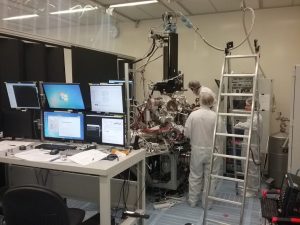
Lars Gundlach joins group as visiting scientist
Jan 2018

Lars Gundlach, professor for Chemistry and Physics at the University in Delaware, receives an Alexander von Humboldt Research Fellowship. We will collaborate with Lars on ultrafast microscopy and phonon dynamics in nanomaterials.
Start of DFG-funded project on ultrafast spin dynamics in semiconductor-metal heterostructures
Jan 2018
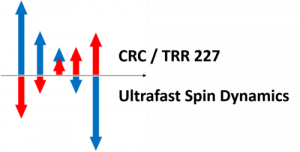
We are participating in the trans-regional collaborative research center TRR227. 18 projects located at the Freie Universität Berlin, the Martin-Luther-Universität Halle-Wittenberg, the Helmholtz-Zentrum Berlin, the Max-Born-Institut and the Fritz-Haber-Institut will study ultrafast spin dynamics with different approaches. We will use trARPES for the investigation of charge and spin currents in [more...]
A momentum-resolved view on phonon dynamics in WSe2
Jul 2017
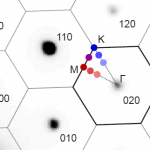
new paper: Waldecker et al., Phys. Rev. Lett. 119, 036803 (2017).
open access: arXiv:1703.03496
The interaction of electrons and phonons dictate fundamental processes in solids: the conductivity of charge carriers and heat, energy dissipation, etc. We investigate the basic mechanism of electron-phonon interaction with ultrafast techniques, in particular femtosecond electron diffraction. By tacking snapshots of the atomic structure of a sample, movies of ultrafast structural dynamics can be obtained. In this work, we investigate the layered semiconductor material tungsten diselenide and show that the electrons interact preferentially with phonons with large momentum vector.
open access: arXiv:1703.03496
The interaction of electrons and phonons dictate fundamental processes in solids: the conductivity of charge carriers and heat, energy dissipation, etc. We investigate the basic mechanism of electron-phonon interaction with ultrafast techniques, in particular femtosecond electron diffraction. By tacking snapshots of the atomic structure of a sample, movies of ultrafast structural dynamics can be obtained. In this work, we investigate the layered semiconductor material tungsten diselenide and show that the electrons interact preferentially with phonons with large momentum vector.
Move of the experiments to the new clean-room laboratory
Jul 2017
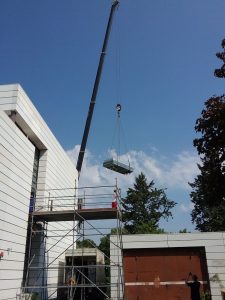
After the completion of the new high-precision labs of the Department of Physical Chemistry, we finally merge all experiments in a single lab. The biggest logistic challenge is the move of the trARPES lab from the old hospital building Fabeckstraße, which requires getting the heavy equipment out through a window.